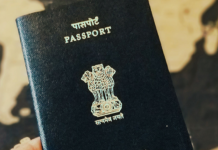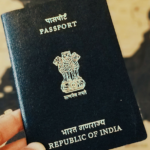Australia offers a diverse range of study options for international students, with more than 1,200 institutions and over 22,000 courses to choose from. You can study at all levels of education from primary and secondary school, to vocational education and training (VET), from English language courses to higher education (including universities).
The Education Services for Overseas Students (ESOS) Act 2000 (opens in a new window) and the National Code of Practice (opens in a new window) for Registration Authorities and Providers of Education and Training to Overseas Students 2007 (National Code) provide nationally consistent standards for providers of education and training for international students.
As an international student on a student visa, you must study with an institution and in a course that is registered on the Commonwealth Register of Institutions and Courses for Overseas Students (CRICOS). CRICOS registration guarantees that the course and the institution at which you study meet the high standards expected by international students.
Application process
The first step is to apply for the course you want. There are two ways to apply:
1. Direct to the education provider
To apply direct, download the application form from the education provider’s website. If you are applying for courses at more than one institution, you will need to submit a separate application to each institution.
2. Through an Australian education agent
Most institutions partner with a number of agents. Details of the agents, an institution works with can be found on their website or by contacting them directly.
You will need to prepare supporting documentation to send with your application. The documents vary depending on the course, provider and qualification you’re studying for.
The most important documents include
1. Certificates that verify your previous study, including qualifications you already have.
2. Evidence of your English language proficiency.
3. Certificates or documents which verify previous study or work experience if you are seeking course credits. These must be translated into English.
Receiving your Letter of Offer
If your application is successful, you will receive a ‘Letter of Offer’. To confirm your offer you must respond to this letter by signing and sending an acceptance of offer back to the institution. This can usually be done by mail or in some cases, by scanning and emailing the letter.The Letter of Offer is a contract between you and the institution. It sets out the course you will be enrolled in, enrolment conditions, the fees you need to pay and the refund payable if you don’t complete your course with that provider. This contract is very important – if you don’t start your course, or finish your course, this written agreement will be used to determine whether you will receive a refund.
Read the Letter of Offer carefully before you accept it.
Make sure that you understand all your rights, including the refund arrangements.
Do not accept the Letter of Offer, if you are not happy with any of its terms.
Keep a copy of the Letter of Offer. You will need this copy so that you are aware of your rights and if you have to make a claim against the institution.
Confirmation of Enrolment
After you have accepted your Offer and paid your deposit you will receive an ‘Electronic Confirmation of Enrolment’ (eCoE) by email. This will outline your course start date, total course fees and how long your course will run for.
Visa application
If you are applying for your Student Visa through the Department of Immigration and Citizenship’s online lodgement facility, you will need the details of your electronic Confirmation of Enrolment to lodge your visa application. If you are lodging a paper visa application you must provide the electronic Confirmation of Enrolment prior to the visa being granted.
You should make sure that you meet requirements for a student visa before you accept an offer and pay any tuition fees.
You can know more about the student visa (sub class 500) from the government website
By Premji















































